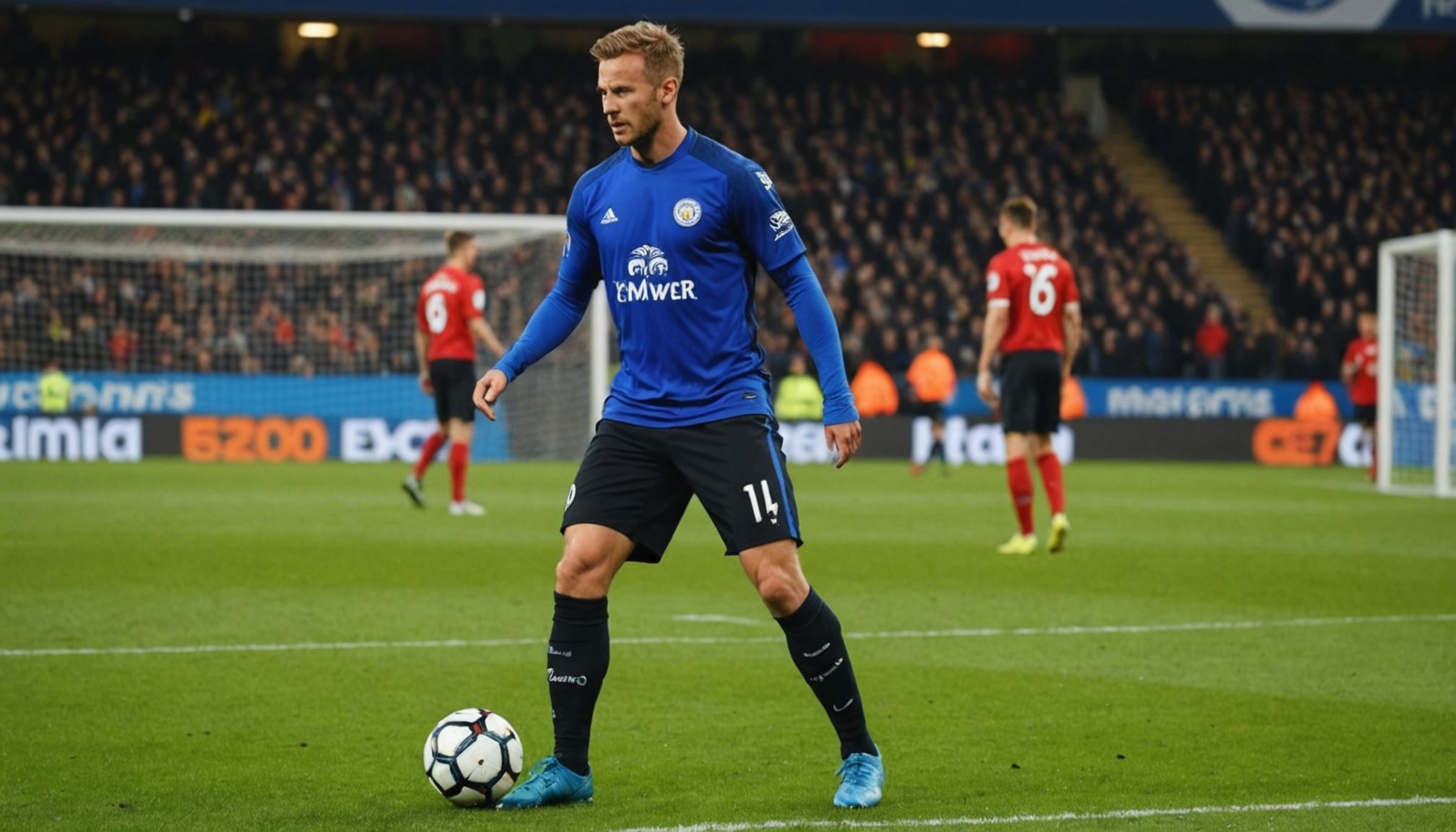Understanding the Importance of Free Kick Accuracy
In the realm of football, free kick accuracy is pivotal. A precise free kick can be the determining factor in matches, providing opportunities to score and alter the game’s momentum. This skill requires a blend of football techniques and strategic insights, making it a crucial component of gameplay.
Accurate free kicks impact the overall team performance significantly. They allow teams to capitalize on set-piece opportunities, often defying robust defenses. Developing this skill enhances a team’s ability to convert these chances, directly influencing match outcomes.
Also to read : Winning minds: effective techniques to inspire football players during challenging losing spells
The psychological aspect of taking free kicks cannot be overlooked. Confidence and composure under pressure are essential. Players must not only master the technical elements but also handle the mental challenges associated with performing in critical match moments. This mental fortitude can differentiate a good player from a great one, as it involves managing stress and focus.
Skill development through dedicated practice ensures players continuously improve their technique. Emphasizing accuracy in training routines develops muscle memory and builds confidence. Players who invest time honing this skill tend to execute free kicks with finesse, earning recognition and contributing significantly to their teams’ success. Understanding and improving free kick accuracy, therefore, is indispensable for players aspiring to excel in football.
Also to discover : Effective techniques for football academies to boost technical skill development in young players
Key Techniques for Enhancing Free Kick Performance
Enhancing your free kick techniques is essential for anyone looking to elevate their game. One critical aspect is achieving precise foot placement. Proper foot positioning plays a pivotal role in determining how the ball is struck, influencing both direction and height. Accurate foot placement ensures the striking of the ball with the desired impact point, essential for achieving the intended trajectory and velocity.
Proper Foot Placement
The angle of the foot upon contact is crucial. Players should position their non-kicking foot close to the ball and align parallel to the target. This alignment helps in stabilising body balance and maximising accuracy improvement.
Body Positioning
Effective body positioning is equally important. Players should maintain an upright posture with the chest slightly over the ball to keep the shot low and controlled. Proper body alignment allows for more consistent strikes and reduces the margin of error, ensuring more accurate free kicks.
Follow-Through Mechanics
The follow-through phase can considerably impact accuracy. A controlled and extended follow-through ensures energy transfer is consistent, enhancing shot precision. This phase is critical in maintaining balance and optimizing kicking mechanics, directly contributing to effective free kick execution.
By focusing on these elements, players can significantly improve their accuracy and efficiency in taking free kicks, making them a more formidable presence on the field.
Drills for Practicing Free Kicks
To cultivate free kick skills, engaging in structured practice routines is vital. Incorporating dedicated free kick drills allows players of all levels to improve their technique systematically.
For beginners, starting with basic wall drills helps develop control and confidence by focusing on consistent execution. As proficiency grows, practising set pieces against simulated defensive walls encourages precision and tactical decision-making. These drills challenge players to fine-tune their aim and explore varying angles.
Incorporating game-like scenarios into practice sessions heightens the practical application of learned techniques. Introducing timing constraints and pressure elements simulates match conditions, conditioning players to perform under stress. This approach enables individuals to become accustomed to real game situations that demand quick, accurate decisive action.
Moreover, drills that encourage both accuracy and power development can be beneficial. Practising shots that blend these two attributes enhances a player’s ability to execute versatile free kicks. Whether curving the ball or opting for a powerful, direct hit, mastering both aspects adds depth to a player’s skill set.
Skill enhancement through targeted free kick drills thus becomes crucial in evolving a player’s potential, ultimately making them a valuable asset on the field.
Utilizing Visual Aids and Technology
Enhancing free kick performance is within reach through the use of training aids and technological advancements. Video analysis offers a significant advantage, allowing players to closely observe their free kick techniques. Reviewing footage helps identify areas requiring improvement and highlights successful football techniques.
Video Analysis and Performance Tracking
Utilizing video analysis tools, players can break down their actions into precise movements. This detailed examination provides valuable insights into how to adjust foot placement, optimize body alignment, and ensure proper follow-through during free kicks. Performance tracking helps in setting tangible improvement goals, as players can monitor their progress over time.
Technology Tools for Technique Enhancement
Technological tools such as motion sensors and simulation software present innovative ways to practice free kick accuracy. These tools create interactive environments for players to experiment and develop new football techniques, helping in the cultivation of muscle memory essential for accuracy improvement.
Visual Guides for Better Techniques
Visual aids, including target nets and ball trajectory indicators, assist players in understanding the impact of their strikes. Using these guides during drills allows for immediate feedback, empowering players to make real-time adjustments. Incorporating these training aids helps bridge the gap between practice sessions and match-day performance, building confidence and technical proficiency.
Learning from the Experts: Insights and Anecdotes
Drawing wisdom from expert tips and professional footballers provides invaluable insights into mastering free kicks. Many players, through shared inspirational stories, highlight the importance of tenacity and continuous learning.
Professional Insights
Renowned players often emphasize professional insights such as maintaining focus and composure under pressure. For instance, David Beckham always stresses practising varied free kick techniques to adapt to different match scenarios. These anecdotes inspire upcoming players to develop their unique style while perfecting fundamental skills.
Inspirational Stories
Inspirational stories abound in the world of football, detailing how players overcame challenges in free kick execution. Cristiano Ronaldo, for example, recounts extensive hours dedicated to skill development during his youth. Such personal stories underline the significance of discipline and consistent practice.
Importance of Mentorship
Mentorship is a recurrent theme in professional journeys. Legends like Alessandro Del Piero commend the guidance they received from seasoned teammates, which enhanced their football techniques. Learning from experienced players offers a different perspective, fostering growth and skill enhancement. Engaging with mentors allows aspiring footballers to gain nuanced understanding and receive tailored advice that supports their development trajectory.
Conclusion: Strategies for Continuous Improvement
Continuous improvement in football training requires setting tangible goals aimed at skill progression. Players need to routinely assess their growth; self-assessment and feedback are crucial in identifying areas for enhancement. Engaging in skill progression ensures consistent development over time.
Setting personal objectives can help maintain focus and motivation. Players should establish short-term goals that lead to longer-term ambitions, facilitating structured growth. Achieving these objectives offers a sense of accomplishment and lays the foundation for further skill progression.
Incorporating feedback from coaches and teammates enriches the training experience. Constructive critique helps players adjust techniques and improve overall performance. This focus on feedback and assessment creates a cycle of improvement, crucial for lifelong development.
Participating in clubs or leagues provides competitive practice environments. Such settings challenge players, offering opportunities to apply learned football techniques in real-game scenarios. Competition fosters resilience and quick decision-making under pressure, essential for football training.
Ultimately, players dedicated to lifelong development should continually challenge themselves. Whether through structured practice or competition, the journey of honing football skills is ongoing. Building a routine of consistent practice, evaluation, and adjustment cultivates a player’s potential, paving the way for excellence on and off the field.











